Example 7: Basic Reflectarray Simulation
This case explains how to analyze a reflectarray layout. The database used in step 4 to create the reflectarray layout is the database created on section Annex 1: Creating a Reflectarray Database.
Step 1: Create a new MOM Project.
Open newFASANT and select 'File --> New' option.
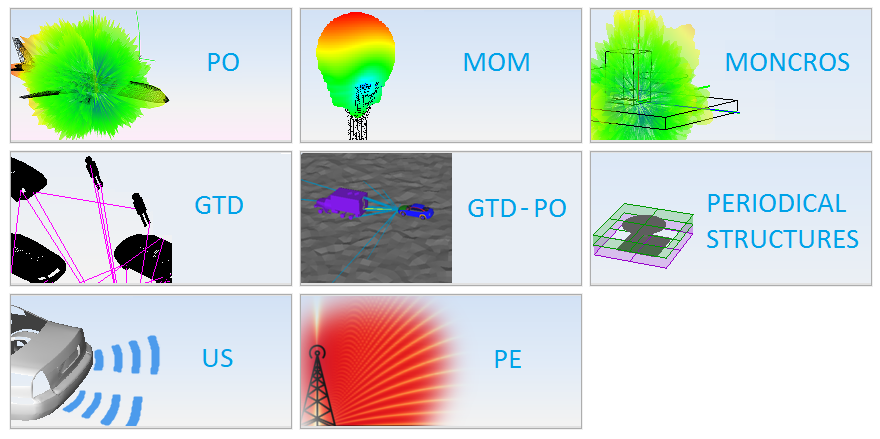
Figure 1. New Project panel
Select 'MOM' option on the previous figure and start to configure the project.
Step 2: Create the geometry model. To get the complete information about geometries edition see 4. Geometry Menu.
First, select 'centimeters' on units list on the bar at the bottom of the main window.

Figure 2. Units selection
Execute 'plane' command writing it on the command line and sets the parameters as the next figure shows when command line ask for it.
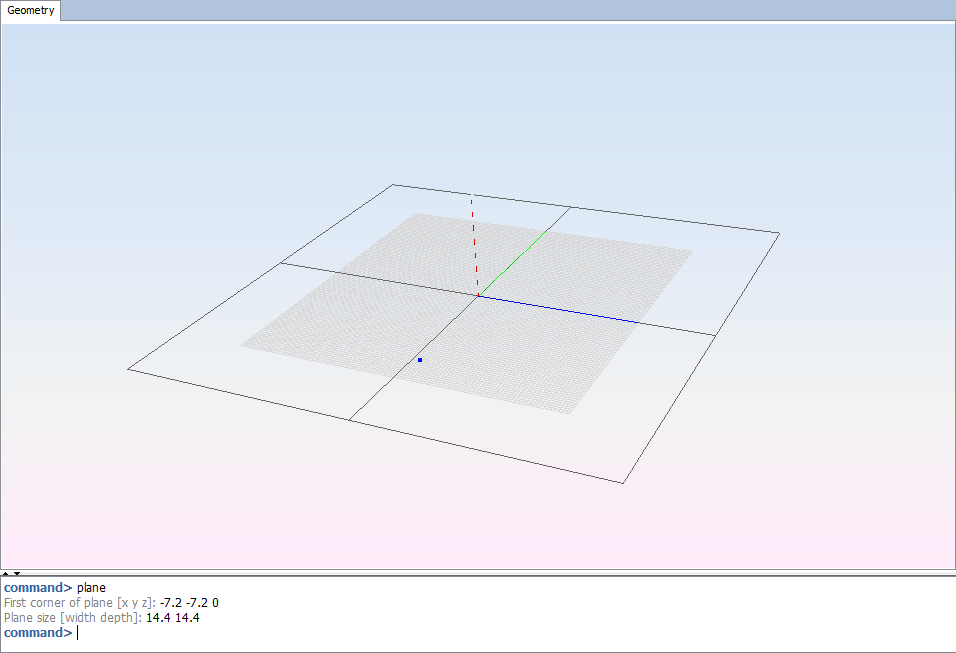
Figure 3. Plane parameters
Step 3: Set Simulation Parameters
Select 'Simulation --> Parameters' option on the menu bar and the following panel appears. Set the parameters as the next figure shows and save it.
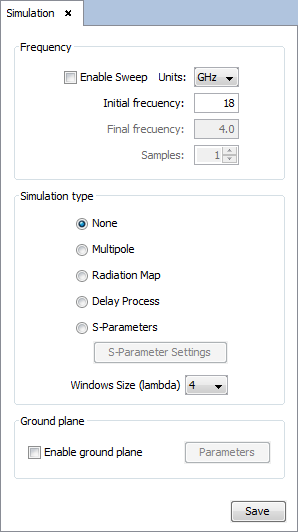
Figure 4. Simulation Parameters panel
Step 4: Create a reflectarray layout.
Select 'Source --> Reflectarray --> New Layout' option. The following panel will appear. First load de database previously created with Periodical Structures module, using the icon with a green plus sign and selecting the database on the path where it is stored. Then select the parameters as the next figure shows:

Figure 5. Reflectarray New Layout panel
Clicking on the 'eye' icon, the parameters of the database will be shown on a new tab.
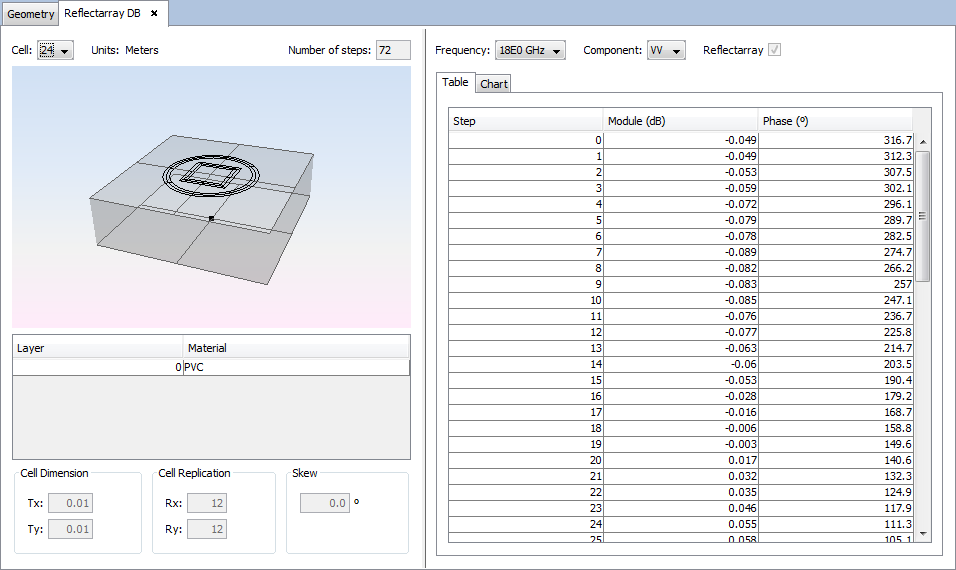
Figure 6. Reflectarray Database Information panel
Select the plane previously created to generate the reflectarray over it. The reflectarray layout is generated placing in each cell the structure of geometries with the phase value closest to the phase value calculated by the user-selected function for this purpose. Then, click on 'Create' button and wait until the reflectarray layout is created.
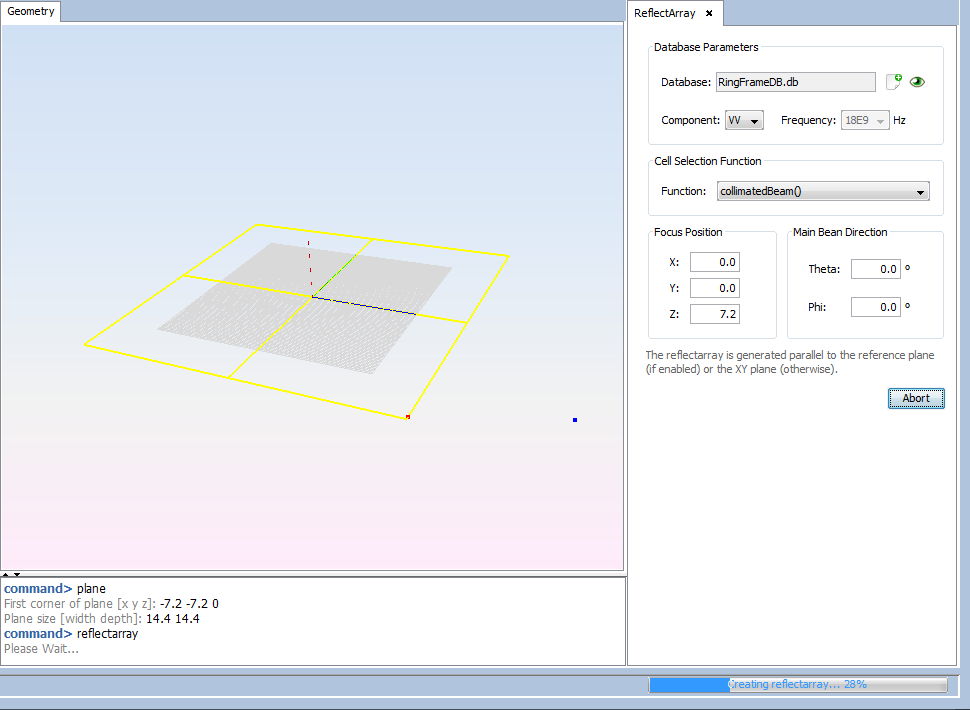
Figure 7. Reflectarray creation process
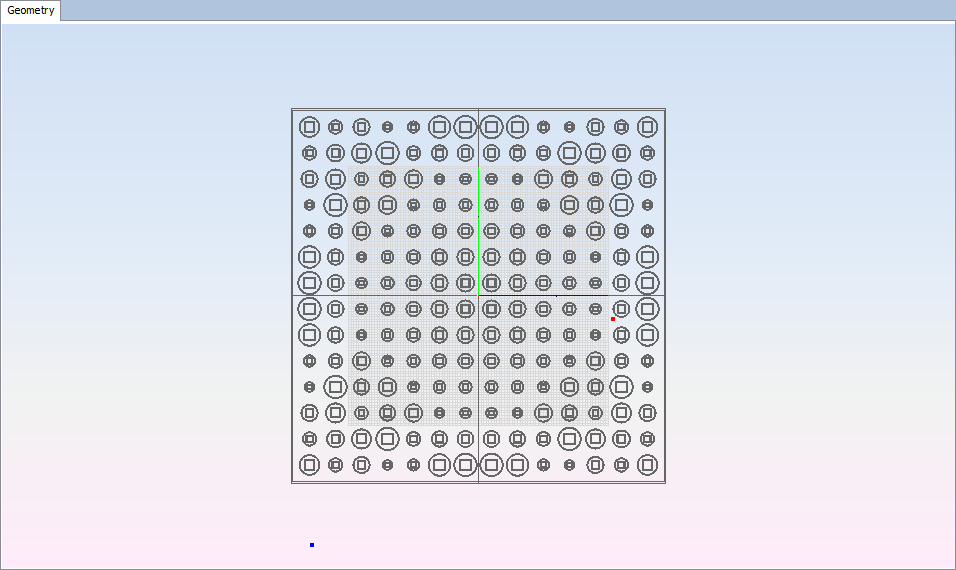
Figure 8. Reflectarray Layout
Step 5: Set the source parameters. To obtain more information about sources and antennas see Antennas.
First, select 'View--> Reference Plane' and set the parameters as the next figure shows, then click on 'Update' button to put the reference plane as the figure:
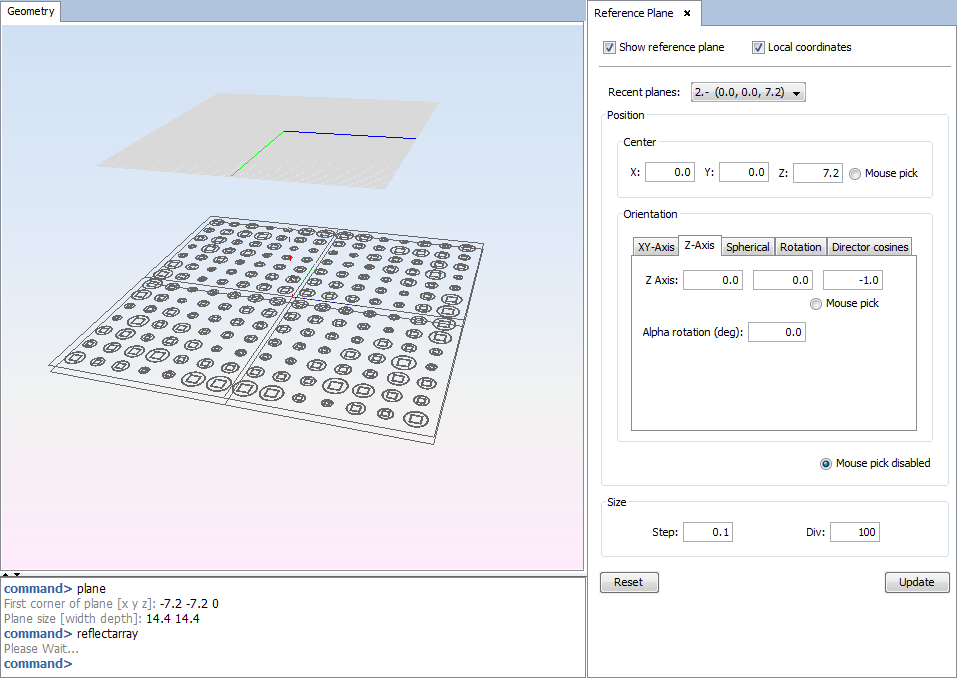
Figure 9. Reference Plane panel
Select 'Source --> Import Pattern File' option and select BOC0677.dia file from 'myDataFiles' folder on the installation path of newFASANT software.
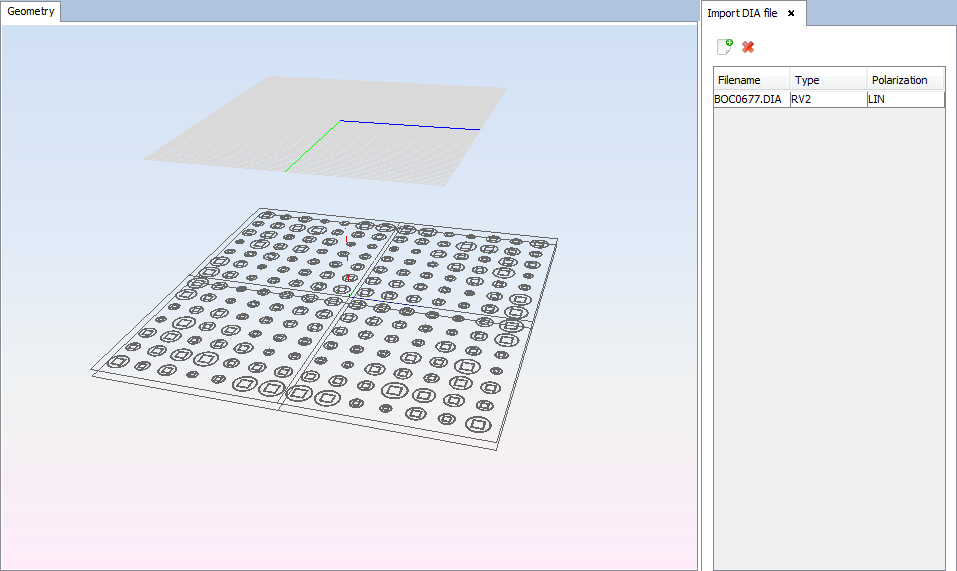
Figure 10. Pattern File Import panel
Select 'Source --> Pattern File --> Pattern File Antenna' option and set the parameters as show the next figure. Then save the parameters and the antenna appears.
Important select the check box "Relative to reference plane" to set the position and orientation relative to the local reference plane.
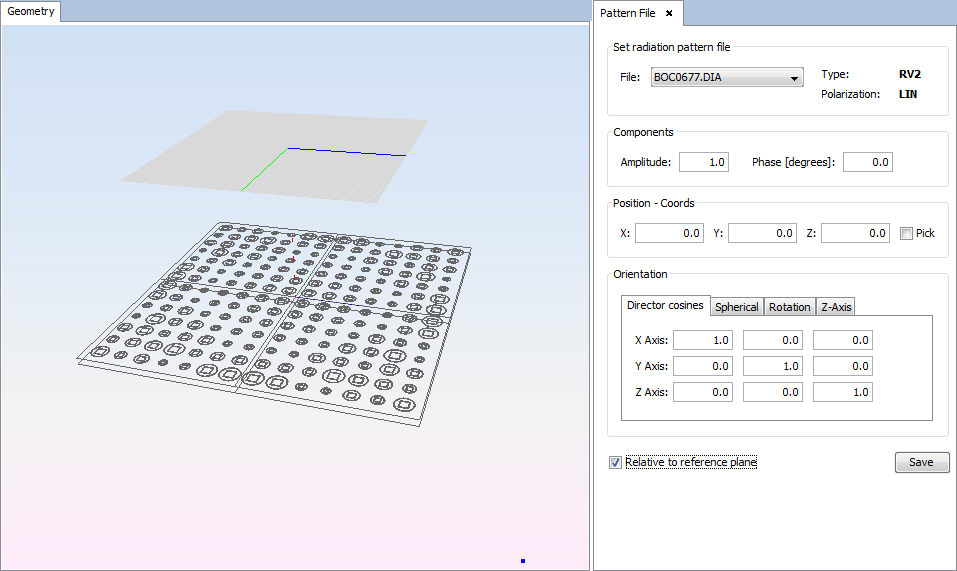
Figure 11. Pattern File Antenna panel
Step 6: Meshing the geometry model. In order to obtain the shortest possible time for meshing,it is recommended to run the process of meshing with the number of physical processors available to the machine.
Select 'Meshing --> Parameters' to open the meshing configuration panel and then set the parameters as show the next figure.

Figure 12. Meshing panel
Then click on 'Mesh' button to starting the meshing. A panel appears to display meshing process information.
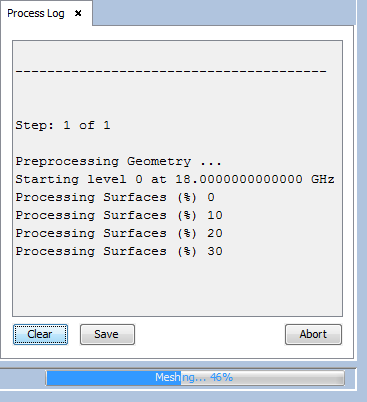
Figure 13. Meshing process log
Step 7: Execute the simulation.
Select 'Calculate --> Execute' option to open simulation parameters. Then select the number of processors as the next figure show. In order to obtain the shortest possible time for calculating the results,it is recommended to run the process with the number of physical processors available to the machine.
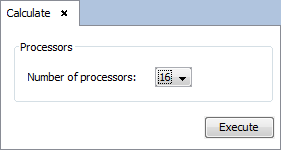
Figure 14. Execute panel
Then click on 'Execute' button to starting the simulation. A panel appears to display execute process information.
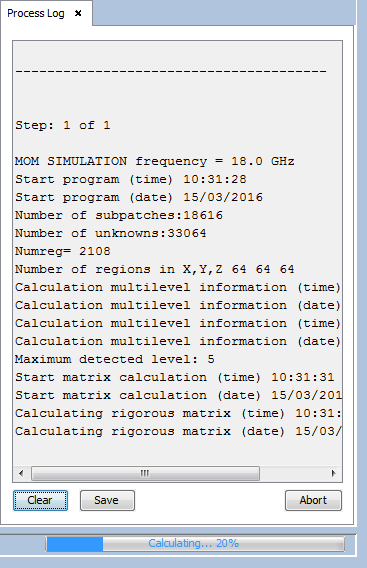
Figure 15. Execute process log
Step 8: Show Results. To get more information about the graphics panel advanced options (clicking on right button of the mouse over the panel) see Annex 1: Graphics Advanced Options.
Select 'Show Results --> Far Field --> View Cuts' option to show the cuts of the observation directions options.
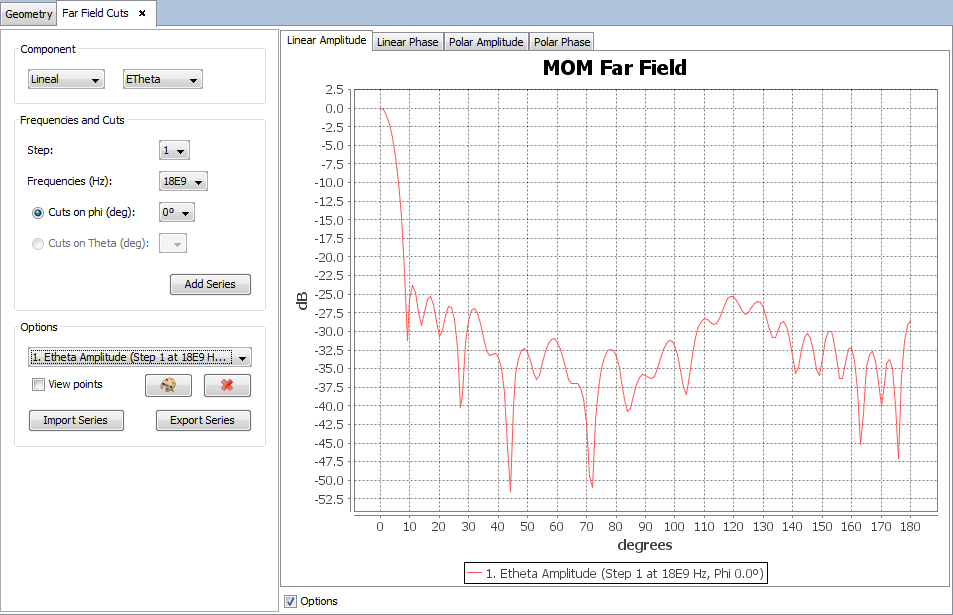
Figure 16. Far Field cuts
Selecting other values for the component, step, frequency or cut parameters and clicking on 'Add Series' button a new cut will be added to the selected parameters. On 'Show Results --> Far Field' menu, other results are present such as 'View Cuts by Step' and 'View Cuts by Frequency' and this option display the values for one selected point for each step or frequency.
Select 'Show Results --> Radiation Pattern --> View 3D Pattern' option to show the cuts of the radiation pattern options.
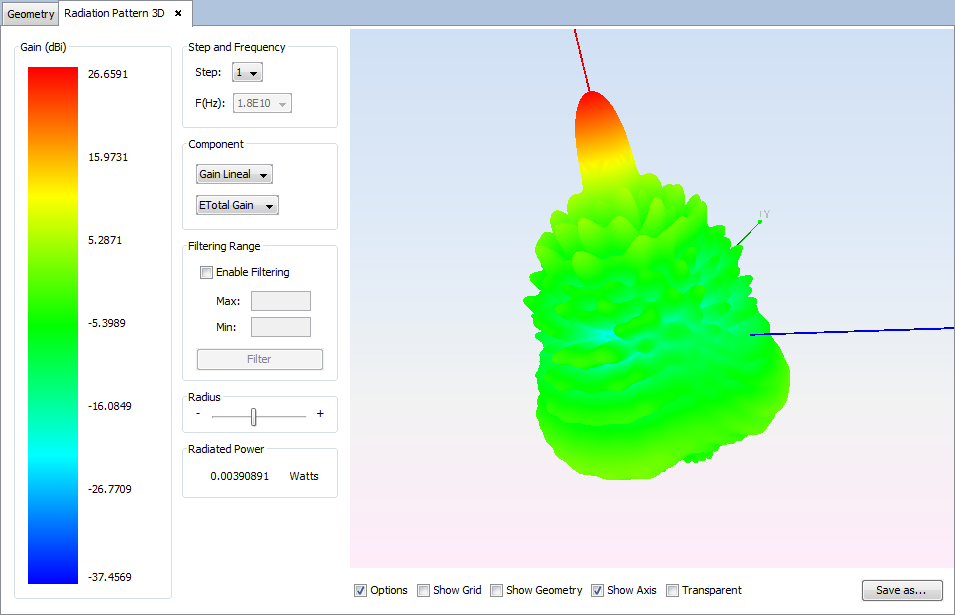
Figure 17. Radiation Pattern 3D
Changing values for step, frequency, component or filtering parameters the visualization for the new parameters will be shown.
Select 'Show Results --> View Currents' option to show the current density.
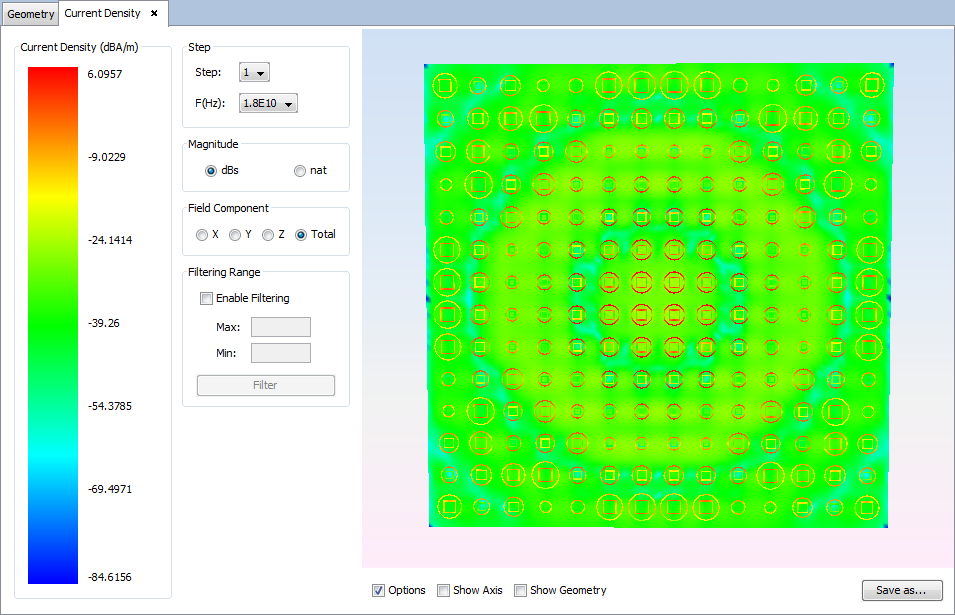
Figure 18. Current Density
Changing values for step, frequency, magnitude, component or filtering parameters the visualization for the new parameters will be shown.
Select 'Show Results --> View Charges' option to show the charge density.
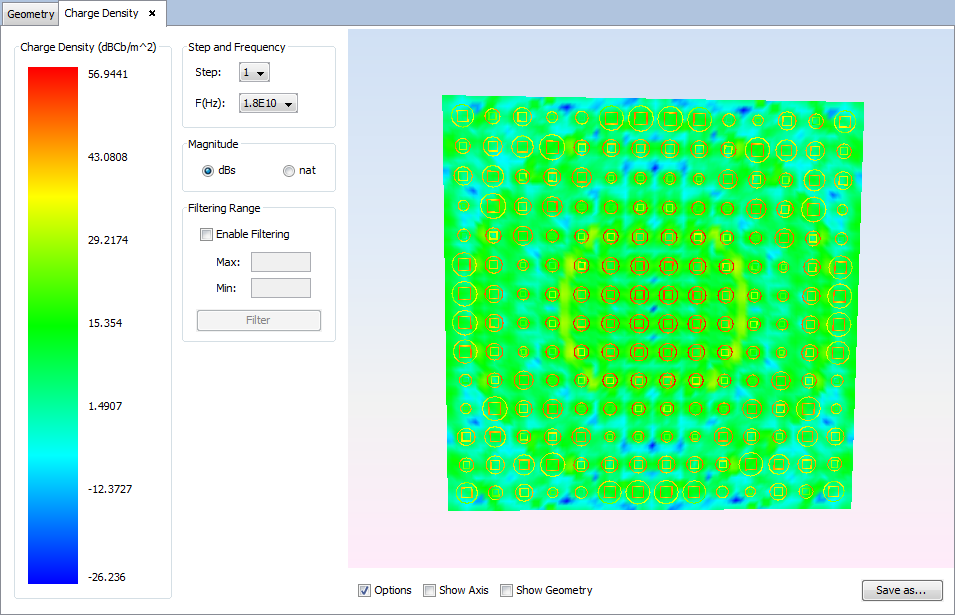
Figure 19. Charge Density